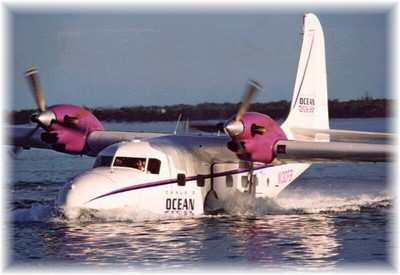Wed, Apr 18, 2007
Rosenker Says Recent Accidents Share Common Themes
 In a speech before the Aging
Aircraft Conference now underway in Palm Springs, CA, National
Transportation Safety Board Chairman Mark V. Rosenker reiterated
the agency's concern with aging aircraft.
In a speech before the Aging
Aircraft Conference now underway in Palm Springs, CA, National
Transportation Safety Board Chairman Mark V. Rosenker reiterated
the agency's concern with aging aircraft.
"We have investigated several accidents and incidents that have
highlighted the safety implications resulting from aircraft aging
and these accidents repeatedly demonstrate the importance of
effective airworthiness programs throughout the service life of
aircraft," Rosenker said. "With the proper maintenance program,
these accidents involving aging aircraft could have been
prevented."
Rosenker stressed there is no single criterion that defines an
aircraft as 'old'. The age of an aircraft depends on a number of
factors that include, but are not limited to the chronological age,
number of flight cycles, number of flight hours and the environment
in which the aircraft operates. Furthermore, determining the
overall health of an aircraft is complicated by the fact that
individual aircraft components can age differently in different
portions of the same aircraft and by the nature of certain aging
mechanisms, such as fatigue.
Some common themes identified in each of these accidents
involving aging aircraft have been:
- Unknown service histories as is the case with military surplus
aircraft
- Poor fatigue design details... The regulations did not require
fatigue analysis for these airplanes
- Most older airplanes have no inspection program
- The continued operation of airplanes beyond their useful
lifespan.
"The Safety Board feels that the continued commercial operation
of these 50 to 60 year old airplanes that were not certified to the
standards of today's modern airplanes is not safe -- all passengers
should have the same level of safety," Rosenker said.

"The FAA should require records reviews, aging airplane
inspections, and supplemental inspections for all airplanes
operated under Part's 121, 129 and 135 regardless of the year they
were type certificated, the number of passengers they carry or
their maximum payload, and has issued related safety
recommendations to that effect."
More News
DETRESFA (Distress Phrase) The code word used to designate an emergency phase wherein there is reasonable certainty that an aircraft and its occupants are threatened by grave and i>[...]
"General aviation is at the forefront of developing and introducing innovative technologies that will transform the entire aviation industry..." Source: Kyle Martin, Vice President>[...]
Direct Straight line flight between two navigational aids, fixes, points, or any combination thereof. When used by pilots in describing off-airway routes, points defining direct ro>[...]
Aero Linx: Women in Corporate Aviation Women in Corporate Aviation support individuals seeking career advancement and professional development in the business aviation industry. Me>[...]
“We would like to thank the many volunteers that help throughout the year to pull off the event, as well as the several reviewers, judges, and SURVICE staff that provide team>[...]
 ANN's Daily Aero-Term (04.26.24): DETRESFA (Distress Phrase)
ANN's Daily Aero-Term (04.26.24): DETRESFA (Distress Phrase) Aero-News: Quote of the Day (04.26.24)
Aero-News: Quote of the Day (04.26.24) ANN's Daily Aero-Term (04.27.24): Direct
ANN's Daily Aero-Term (04.27.24): Direct ANN's Daily Aero-Linx (04.27.24)
ANN's Daily Aero-Linx (04.27.24) Aero-News: Quote of the Day (04.27.24)
Aero-News: Quote of the Day (04.27.24)




